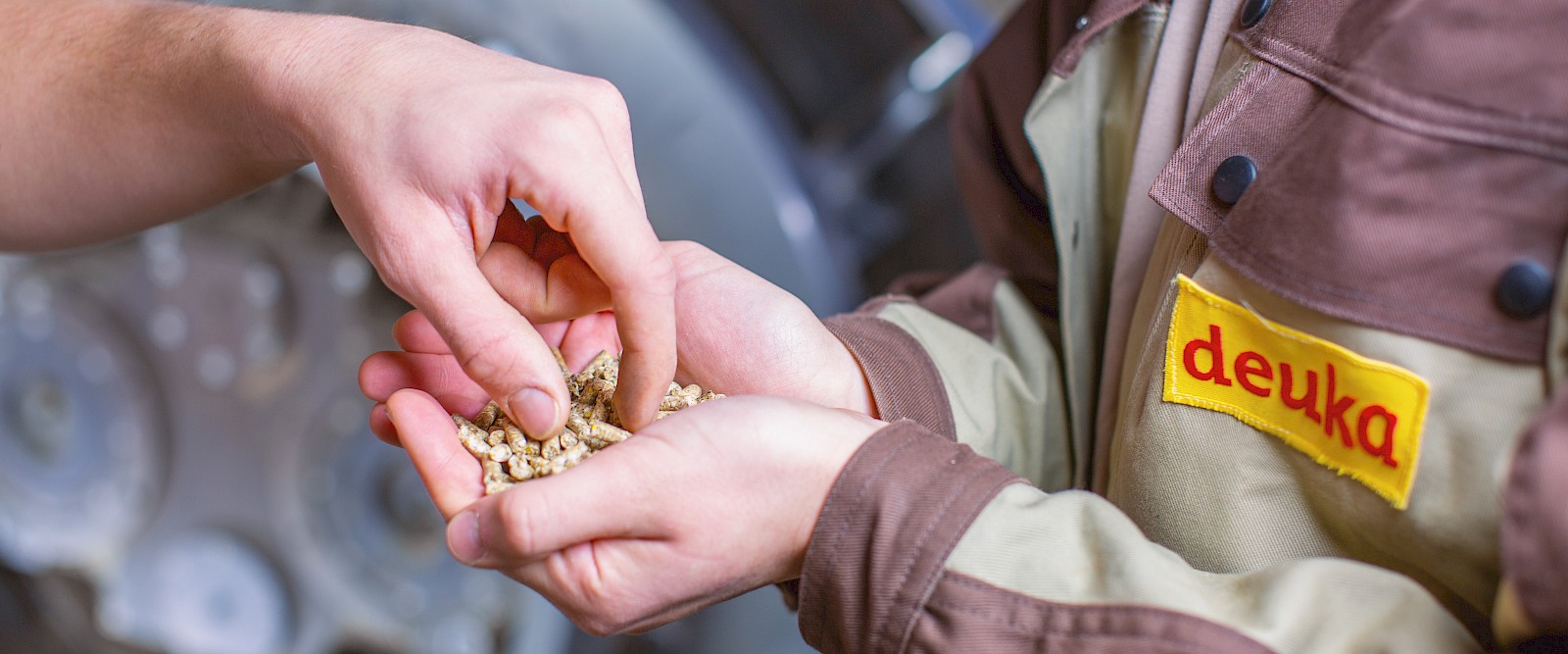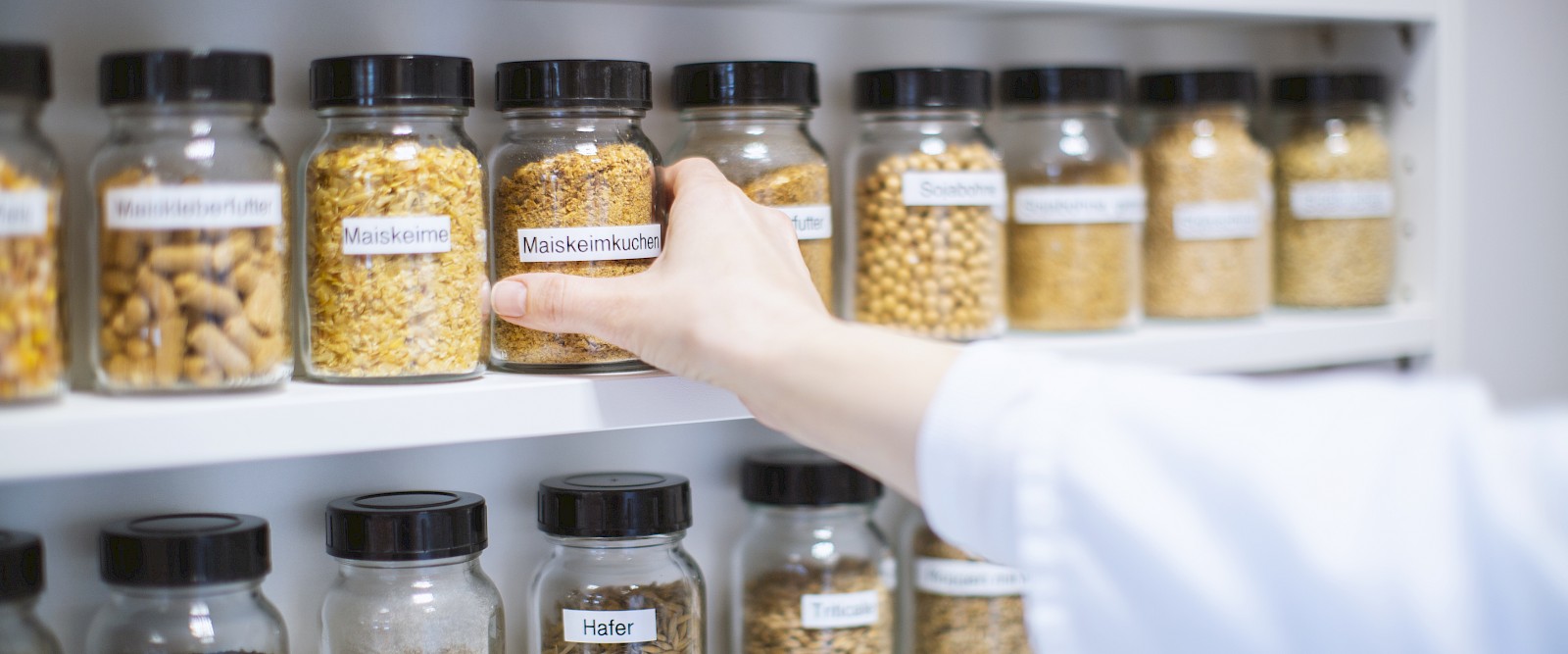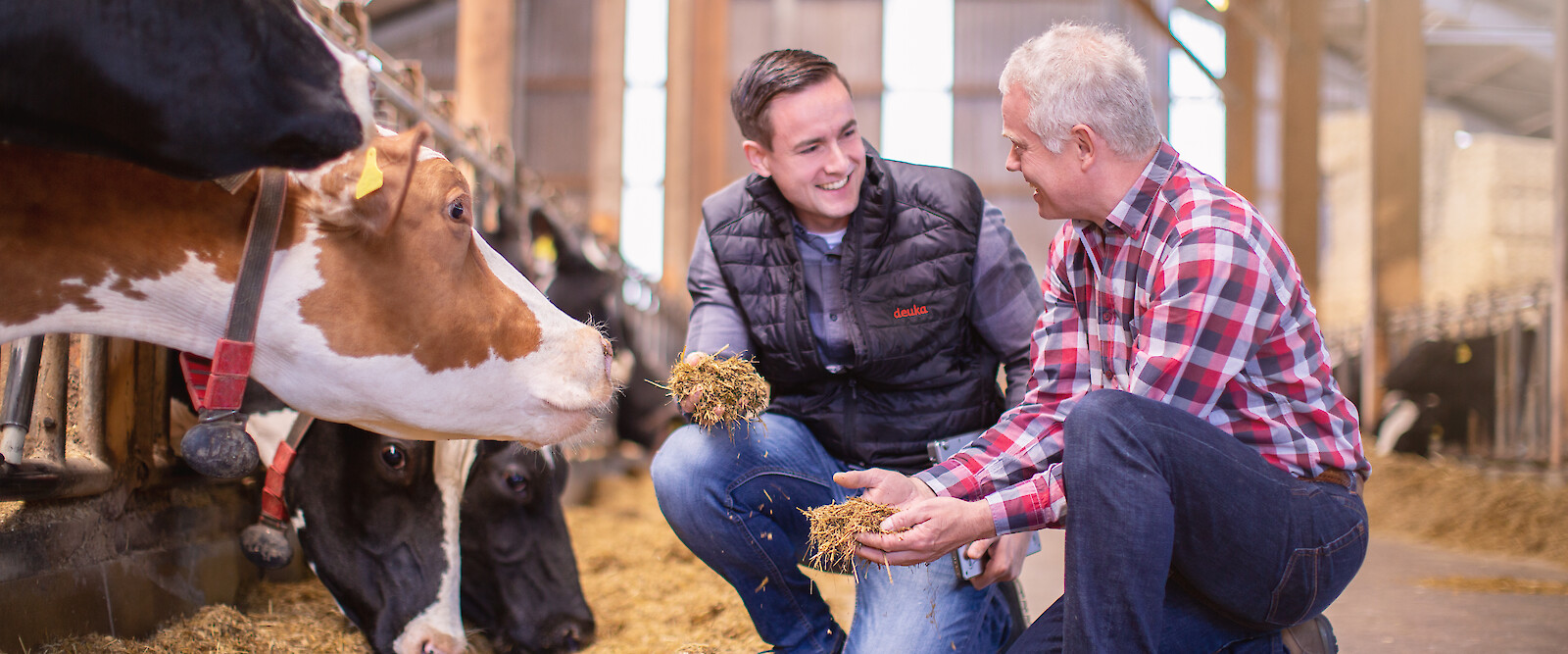Raw material and nutrient lexicon
Weitere Einträge
- Rapeseed cake
- Rapeseed extraction meal
- Crude ash
- Crude fibre
- Crude fat
- Crude protein
- Rumen resistant starch (bXS)
- Ruminal N balance (RNB)
- Rye
- Rye bran
Crude fibre
The crude fibre comprises the dietary fibres contained in the feed components. These so-called plant skeletal carbohydrates are composed of cellulose, hemicelluloses (pentosans, hexosans), and indigestible substances, especially lignin. The composition of the crude fibre is different in each individual plant feed. These structural carbohydrates are virtually impossible to digest enzymatically in the animal's small intestine. Only the intestinal bacteria can break down the crude fibre through fermentation to form short-chain fatty acids and methane, among other things. The proportion of cellulose and lignin in the raw fibre fraction also determines the raw fibre digestibility in the intestine. High cellulose and lignin contents mean low digestibility and vice versa. For example, wheat and maize have a comparatively good crude fibre digestibility in monogastric animals(pigs, poultry), while oats have a low digestibility. Ruminants can utilise the crude fibre very well via the rumen bacteria. So-called "appendix digestors" such as horses and rabbits can also make good energetic use of the crude fibre in the feed via the appendix bacteria. These animal species depend on a certain minimum proportion of crude fibre in the daily feed ration for stable and healthy digestion. Particularly rich in crude fibre are the by-products from grain processing such as wheat bran, wheat semolina bran and oat hull bran. Individual cereals such as wheat and rye as well as maize contain little crude fibre. Spelt cereals such as oats but also barley are comparatively richer in crude fibre.






